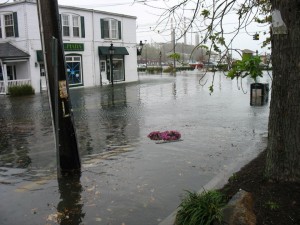It was five years ago today that Hurricane Sandy upended the lives of so many people in my community. October 29, 2012. Looking back, the way we helped young children through those early days stills rings true today. To all the children and families affected by Maria, Irma and Harvey – our hearts are with you.
Go Away, Hurricane Sandy!
Routine, Reassurance, Recognition and Resilience
Dark. Noisy. Confusing. Mom and Dad upset. No TV. Cold. The hurricane that roared through our area was really scary for so many little children. And scary for grownups, many of whom felt powerless both literally and figuratively. My friend Christine, shared these thoughts in an e-mail after returning to work at her pre-school – “So many staff members and family have lost everything at my site! People were crying in the halls in each other’s arms. A 4 year old girl told me there were fish and crabs swimming though her house.”
How can we help our children feel safe in a situation like this? How can we help our children feel safe if we don’t feel safe ourselves? This is a question for all grownups, including music therapists, who care for the young. I have been thinking about how music could be one answer in this situation and in other crises that children face. My music therapy colleague continued in the e-mail – “I spent a few hours considering how to structure my sessions. I decided not to start things I had planned on starting and focused on providing a sense of the familiar by doing the same gathering songs and music from two weeks ago. In some sessions we talked about the lights being out and being in a different house and how I’m still me. “Routine, reassurance and resilience.
Here at Raising Harmony we believe that making music is a natural part of development and that making music can help children develop. This includes a trait as important but as elusive as resilience. Resilience means that we support the little child in feeling, expressing, understanding, coping and creating solutions. In early childhood music therapy practice around the world, clinicians speak about the importance of prevention and early intervening in helping the child gain strength and health. We can give the child and family the opportunity to prevent long term difficulties from the emotional upheaval of a crisis through music and music making.
What does developing resilience sound like in music? Christine gave us some good ideas. Here are a few more thoughts.
Repetition, Routine and Rhythm
Rhythm unifies and brings people together. The day I returned to work after the storm, I invited all the children and staff into one room. Sitting on the floor, I began to pat knees in a very matter-of –fact way. The children joined in first, followed by the staff. Slowly we began to sing a very familiar gathering song. The tempo was just as matter of fact, neither slow nor fast, but just right. The melody was fairly narrow in range. We kept the structure very predictable, just like we had always done. You could feel the children begin to relax and give into the compelling patterns. The message sent through the music was of trust and confidence. For just that musical moment, everything was going to be okay.
Recognition and Respect
One little guy I work with struggles with any change in routine and reacts to any loud or sudden sounds with terror. Can you imagine what this storm meant to him? His family shared with me that it had been a terrible week after the storm. How could this child begin to express and begin to understand when I knew he couldn’t find the words to talk about fear? Well, we began at the piano with a favorite song- consonant harmony and triadic melody. Since we know each other well musically, I then took the musical risk of introducing a flatted sixth chord into the harmonic progression. We both jumped back from the piano and I sang “Scary”. The flatted six chord resolved to the flatted third, and finally the V7 and back to the tonic chord. The stage was set musically to feel the panic, then give a word and sound to describe the feeling, and then a resolution back to an area of comfort. He and I played this game again and again and again until he showed he was anticipating the unusual chord. This musical experience recognized and respected that something really traumatic had happened. But the pattern also allowed for the ‘scary’ to be resolved into something that this child could control.
Response and Resolution
To develop resilience for both this young boy and the group the music had one more job- to give voice to how to cope with problems and create solutions. That’s where songs came into play. Songs can be created that are specific to the child’s needs. Songs can be remembered and re-created by the child at times of stress. For this terrible storm, we adapted an old folk song:
“Shoo fly, don’t bother me. Shoo fly, don’t bother me. Shoo fly, don’t bother me. I want you to go away.” “Go away, cold, dark house. Go away, trees falling down. Go away noisy wind. Go away Hurricane Sandy.”
The melody is strong and the rhythm is crisp. The structure is clear and decisive. And like the music after the storm, so are the kids.
Have you worked through crisis with young children? Share some of your ideas and thoughts, because we all need to be ready for what life brings. Thanks, Christine for getting the conversation started!
I look forward to hearing from you.
Beth

